Golden mirror: Inside NASA's new golden space telescope
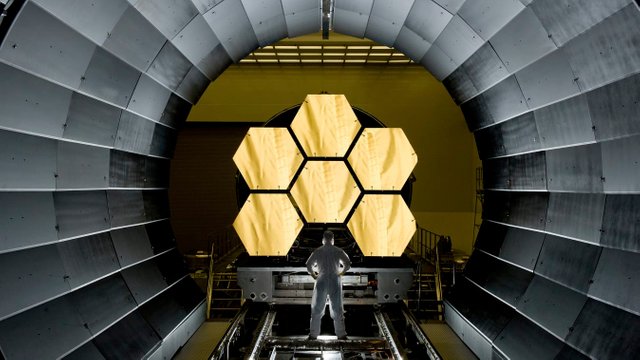
NASA is preparing to launch its best space telescope yet, and it will gaze at the stars through a golden mirror. It's not a single piece, but an array of 18 segments made of beryllium -- a rare metal that is both strong and light -- and coated with a microscopically thin layer of pure gold for maximum reflectivity. It spans a whopping 21 feet (6.5 meters) across.
"A mirror this large has never before been launched into space," wrote Lee Feinberg, the Optical Telescope Element Manager for the James Webb Space Telescope at NASA, in an email interview.
Expected to launch in 2020, the telescope is an $8.8 billion project that will offer astronomers unprecedented views of the cosmos.
"Webb will solve mysteries of our solar system, look beyond to distant worlds around other stars, and probe the mysterious structures and origins of our universe and our place in it," said Feinberg.
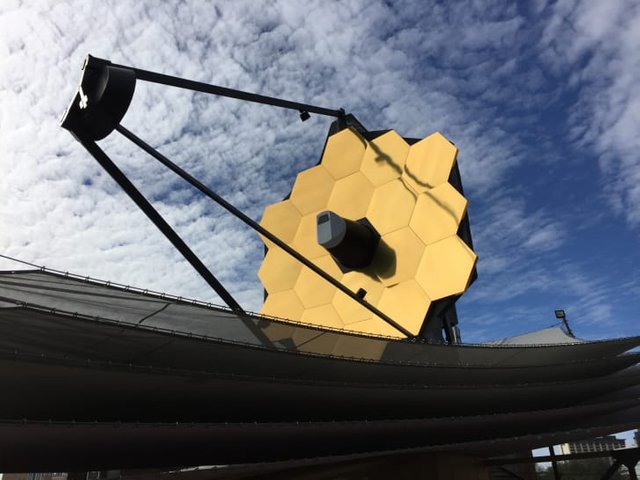
A full size replica of the James Webb Space Telescope shown at the 2017 Super Bowl. Credit: NASA
Keeping it cool
The Webb is designed to be the a more capable successor to the Hubble Space Telescope, launched in 1990.
Unlike Hubble, which orbits the Earth at about 340 miles of altitude, Webb will be sent almost a million miles into space, at a specific location called "L2." It's one of five so-called Lagrange points, specific areas of stability where the gravity from the Earth and the Sun balances out in such a way that putting an object there keeps it in a fixed position relative to the two celestial bodies. The telescope will therefore hitch a ride through space without the need for engines or propulsion, while enjoying an unobstructed view.
It's also very cold out there, which is oddly what NASA wants. James Webb will be able to see deeper into space by looking at the universe not through visible light -- like Hubble and our eyes do -- but through infrared radiation, which we normally think of as heat. That means that the mirror itself needs to be super cold, to avoid emitting any heat that could interfere with its own observations.
"Because warm objects give off infrared light, or heat, if Webb's mirror was the same temperature as Hubble's, the faint infrared light from distant galaxies would be lost in the infrared glow of the mirror," said Feinberg.
To protect itself from the warmth of the Sun, the mirror will sit on a 70-ft sunshield -- as long as a tennis court -- made of a special heat-resistant material. It looks like a giant kite and it will keep the mirror at a gelid -370°F, or -223°C, nearly three times colder than the coldest temperature ever recorded on Earth.
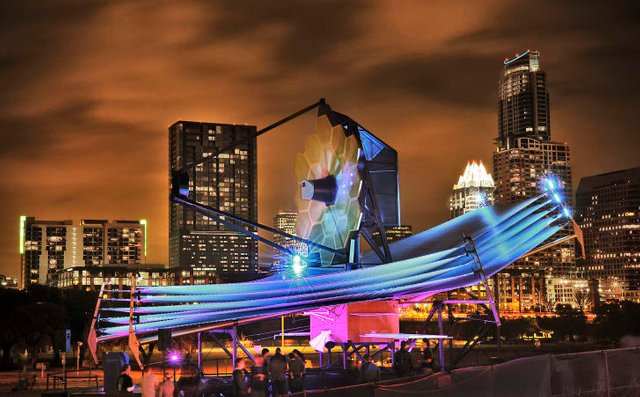
A full-scale Webb model at SXSW in Austin, showing the five-layered sunshield. Credit: NASA
Unfolding in space
Each of the mirror's 18 segments weighs 46 pounds (20 kilos) and spans 4.3 feet (1.3 meters), forming an array that will dwarf Hubble's 7.9-ft primary mirror.
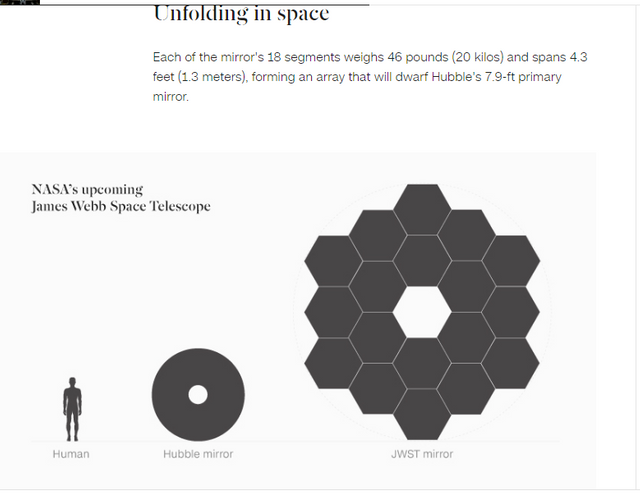
A larger mirror means better performance. "A telescope's sensitivity, or how much detail it can see, is directly related to the size of the mirror area that collects light from the objects being observed. A larger area collects more light, just like a larger bucket collects more water in a rain shower than a small one," said Feinberg.
But to make it fit into the rocket that will send it into space, the mirror needs to be folded, which explains why it's made of hexagons. "The hexagonal shape allows for a roughly circular, segmented mirror with high filling factor, which means the segments fit together without gaps. If the segments were circular, there would be gaps between them."
Once in space, getting these mirrors to focus correctly on faraway galaxies will be a challenge, says Feinberg. It will take two months just to unfurl the telescope, cool it down and position all the segments correctly. "Aligning the primary mirror segments as though they are a single large mirror means each one needs to be aligned to 1/10,000th the thickness of a human hair. What's even more amazing is that the engineers and scientists working on the Webb telescope literally had to invent how to do this."
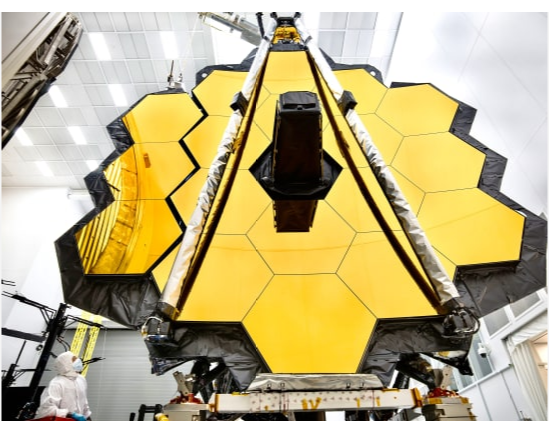
The mirror array will have to be folded to fit into the Ariane 5 rocket that will launch the Webb into space, departing from the Guiana Space Center in French Guiana (South America). Credit: NASA
To move into the correct position, each mirror is equipped with six actuators, or tiny mechanical motors. They are one of Webb's most innovative components as they allow precision movements on the scale of nanometers -- one millionth of a millimeter -- in a region of space where most mechanisms designed for Earth would freeze solid. Astronomers will need to fine-tune the alignment every two weeks from Webb's ground control center, situated on the campus of the Johns Hopkins University in Baltimore -- something that's never been done before.
An elegant design
The James Webb telescope, named after the NASA administrator who oversaw the birth of the Apollo program in the 1960s, is already completely built, including the mirror. It's undergoing testing in Redondo Beach, Calfornia, in preparation of a launch that has been delayed multiple times, the latest one earlier this year, from 2019 to 2020.
NASA says that the individual components are fully operational, but more testing is required to see how they work together. The launch of the Hubble Space Telescope in 1990 was a heartbreaking fiasco: the telescope returned blurred photos, because its main mirror was misshapen due to calibration errors in the testing phase. It took three years, an 11-day mission and a total of 35 hours of spacewalks to fix it. NASA needs to get it right this time because Webb, unlike Hubble, will be far away into space, unreachable by rescue missions.
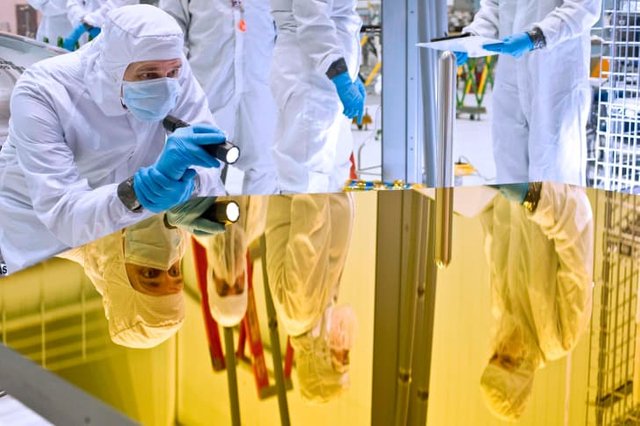
An engineer inspects a segment of Webb's main mirror. Credit: NASA
"We used a multi-prong strategy to make sure the Hubble error was not made again. We have performed crosschecks with predetermined test criteria of all key optical key optical parameters which was based on lessons learned from Hubble. We have performed end to end testing through the entire telescope that was not performed on Hubble. And we have an active primary mirror that allows compensation even if an issue were to arise," said Feinberg.
The Webb was first announced in 1996, and a full-size model of the telescope has been on a world tour that has touched over a dozen cities, building anticipation in the general public. The good looks and pleasing symmetry of the golden mirror have even inspired an artistic following, ranging from paintings to jewelry, which NASA has celebrated with a
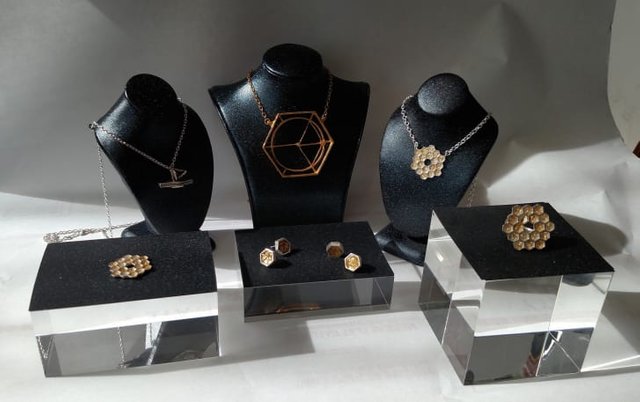
A JWST capsule collection of jewelry by Cameron Stern. Credit: NASA
Collected by: CNN NEWS
Link: https://edition.cnn.com/style/article/james-webb-gold-mirror-style/index.html